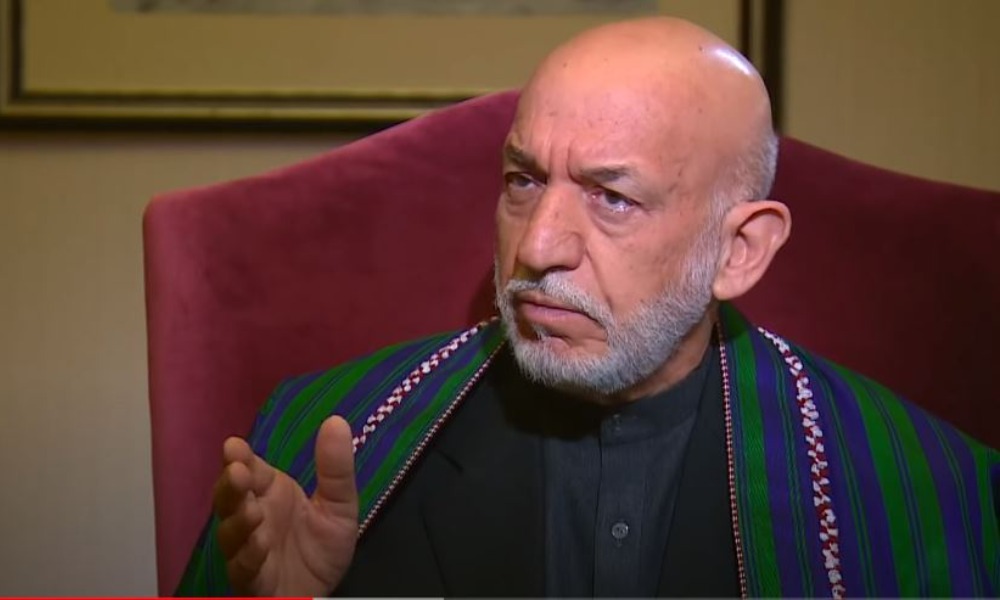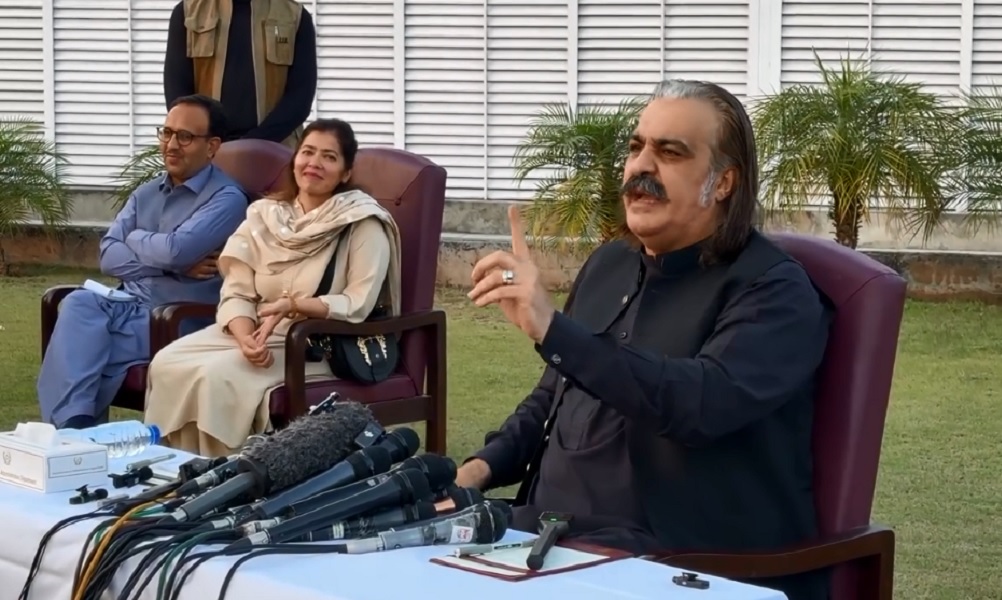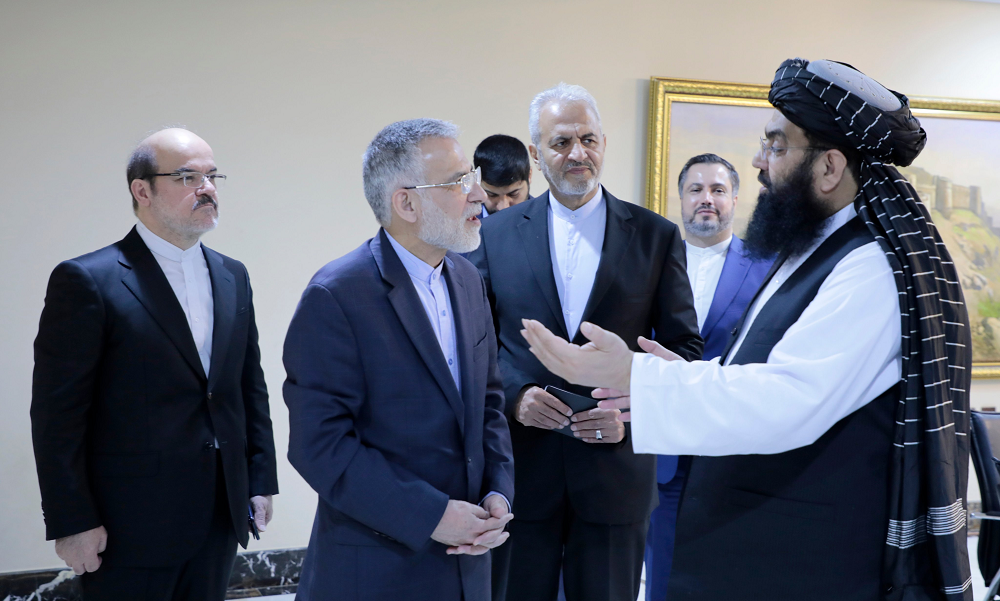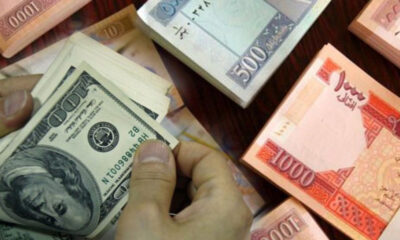Latest News
Karzai ‘invited’ IEA into Kabul to stop the chaos in August

Former Afghan President Hamid Karzai offered insights into the secret and sudden departure of Afghan President Ashraf Ghani on August 15 and said he “invited” the Islamic Emirate of Afghanistan (IEA) to enter Kabul.
In an interview with the Associated Press, Karzai said he issued the invitation in order “to protect the population so that the country, the city doesn’t fall into chaos and the unwanted elements who would probably loot the country, loot shops.”
Karzai said that when Ghani left, his security officials also left. The then defense minister Bismillah Khan even asked Karzai if he wanted to leave Kabul when Karzai contacted him to know what remnants of the government still remained. It turned out there were none. Not even the Kabul police chief had remained, AP reported.
Karzai, who was the country’s president for 13 years after the IEA was first ousted in the wake of the 9/11 attacks, refused to leave.
Karzai said Ghani’s flight scuttled a last-minute push by himself, the government’s chief negotiator Abdullah Abdullah and the IEA leadership in Doha that would have seen the IEA enter the capital as part of a negotiated agreement.
The countdown to a possible deal began August 14, the day before the IEA came to power, AP reported.
Karzai and Abdullah met Ghani, and they agreed that they would leave for Doha the next day with a list of 15 others to negotiate a power-sharing agreement. The IEA were already on the outskirts of Kabul, but Karzai said the leadership in Qatar promised IE forces would remain outside the city until the deal was struck.
Early on the morning of August 15, Karzai said, he waited to draw up the list. The capital was fidgety, on edge. Rumors were swirling about an IEA takeover. Karzai called Doha. He was told the IEA would not enter the city.
At noon, the IEA called to say that “the government should stay in its positions and should not move that they have no intention to (go) into the city,” Karzai said. “I and others spoke to various officials and assurances were given to us that, yes, that was the case, that the Americans and the government forces were holding firm to the places (and) that Kabul would not fall.”
However, by about 2:45 pm it became apparent Ghani had fled the city. Karzai called the defense minister, called the interior minister, searched for the Kabul police chief. Everyone was gone. “There was no official present at all in the capital, no police chief, no corps commander, no other units. They had all left.”
Ghani’s own protection unit’s deputy chief called Karzai to come to the palace and take over the presidency. He declined, saying legally he had no right to the job, AP reported. Instead, the former president decided to make a public, televised message, with his children at his side “so that the Afghan people know that we are all here.”
Karzai was adamant that there would have been an agreement for a peaceful transition had Ghani remained in Kabul.
“Absolutely. Absolutely. That is what we were preparing for, what we were hoping (along) with the chairman of the peace council to go to Doha that evening, or the next morning, and to finalize the agreement,” he said. “And I believe the Taliban (IEA) leaders were also waiting for us in Doha for the same … objective, for the same purpose.”
Today, Karzai meets regularly with the IEA leadership and says the world must engage with them. Equally important, he said, is that Afghans have to come together. War has dominated Afghanistan for more than 40 years, and in the last 20 years “Afghans have suffered on all sides,” he said.
The former president has a plan. In his talks with the IEA, he is advocating the temporary resurrection of the constitution that governed when Afghanistan was a monarchy. The idea was also floated during earlier Doha talks, AP reported.
At the same time, a traditional Loya Jirga — a grand council of all Afghans, including women — would be convened. It would decide the country’s future, including a representative government, a constitution, a national flag, he told AP.
There’s no indication the IEA will accept his formula, though he says they have not rejected it in discussions.
Karzai said the world has to engage with the IEA. Afghanistan needs to operate. Government servants have to be paid. Health care facilities need to function, he told AP.
“Right now, they need to cooperate with the government in any form they can,” said Karzai who also bemoaned the unchallenged and sometimes wrong international perceptions of the IEA.
He cited claims that women and girls are not allowed outside their homes or require a male companion. “That’s not true. There are girls on the streets — women by themselves.” The situation on the ground in Kabul bears this out.
Asked to describe the IEA, Karzai said: “I would describe them as Afghans, but Afghans who have gone through a very difficult period in their lives as all other Afghans have done for the past 40 years.”
We “have been through an extremely difficult period of our history in which we, the Afghans, have made mistakes on all sides, in which the international community and those who interacted with us have made tremendous mistakes,” Karzai said. “It’s time for all of us to realize that, and to look back at the mistakes that we have all made and to make it better.”
Latest News
Pakistan urges global community to block arms flow to militant groups in Afghanistan

A Pakistani diplomat on Saturday called on the international community to block the flow of modern and sophisticated weapons to militant groups in Afghanistan.
“Terrorist armed groups are in possession of billions worth of illicit arms abandoned in Afghanistan,” Syed Atif Raza, a counsellor at the Pakistan Mission to the UN, told an Arria-Formua meeting of the UN Security Council, convened by Sierra Leone.
“We call upon our international partners to recover the vast stockpile of abandoned weapons, prevent their access to armed terrorist groups and take measures to close this thriving black market of illicit arms,” he said.
Pakistani officials have repeatedly claimed that attacks in the country are planned in Afghanistan and that militants use weapons left behind by foreign forces.
The Islamic Emirate, however, has denied the claim, saying Afghanistan is not responsible for Pakistan’s “security failure”.
Latest News
Gandapur says no Afghan refugee will be ‘forcefully’ expelled from Khyber Pakhtunkhwa

Amid rising tensions over Pakistan’s repatriation plans for illegal Afghan nationals, Khyber Pakhtunkhwa Chief Minister Ali Amin Gandapour said on Friday that no refugees will be forcibly deported from the province.
“We will not allow any Afghan refugee to be expelled by force from Khyber Pakhtunkhwa. We stand firmly against such inhumane deportations,” Gandapur said at a press conference.
The remarks came as the Pakistani government ramps up efforts to repatriate undocumented Afghan refugees and Afghan Citizen Card (ACC) holders, following the expiration of the voluntary return deadline on March 31, 2025.
“The past situation, where Afghan refugees, including women and children, were stranded at the border, tarnished Pakistan’s image,” Gandapur said, reaffirming the provincial government’s commitment to a dignified repatriation process.
“We are setting up camps for voluntary repatriation, and anyone wishing to return will be helped. However, we will not forcibly expel any Afghan refugee,” he stated.
Afghans holding Afghan Citizen Cards (ACC) — issued by Pakistan authorities and held by 800,000 people, according to the United Nations — face deportation to Afghanistan after the deadline.
More than 1.3 million Afghans who hold Proof of Registration (PoR) cards from the UN refugee agency, UNHCR, are also to be moved outside the capital Islamabad and neighbouring city Rawalpindi.
Latest News
IEA has 46 township plans for returnees, minister tells visiting Iranian official

The Islamic Emirate of Afghanistan (IEA) has 46 township plans for returning refugees, Acting Minister of Refugees and Repatriation Mawlawi Abdul Kabir told a visiting Iranian diplomat in Kabul, calling on Tehran to give refugees time to return.
According to a statement issued by the ministry on Saturday, Abdul Kabir said during the meeting that Afghanistan and Iran are friendly neighbors that have many commonalities.
He stressed the need to further develop and strengthen relations between the two countries and said that the frequent visits of high-ranking Iranian officials show that Tehran wants positive and friendly relations with Afghanistan.
Abdul Kabir thanked Iran for its assistance and hosting of Afghan refugees, saying that Iran and Pakistan have been hosting Afghan refugees for the past few decades. He called for more leniency in the treatment of migrants.
He said that the Islamic Emirate is preparing a mechanism to provide legal documents for those migrants whose legal residence in Iran has expired.
In the meeting, Mohammad Reza Bahrami, Iran’s new Assistant Minister and Director General for South Asian Affairs at the Foreign Ministry, invited Abdul Kabir to visit Tehran, and called for repatriation plan to be shared before the trip.
He stressed on the humane treatment of Afghan refugees and appreciated the Islamic Emirate’s initiative to build 46 townships, calling it an important step forward for the return of refugees.
Bahrami noted that there are currently eight million Afghan reguees living in Iran, of whom four million are undocumented or have their residence expired.
-

 Latest News4 days ago
Latest News4 days agoAfghanistan’s reconstruction is in the interest of EU: Uzbek president
-

 Latest News4 days ago
Latest News4 days agoUS won’t rest until all Americans detained in Afghanistan brought home: Rubio
-

 Latest News3 days ago
Latest News3 days agoMinistry of Economy calls on US to release Afghanistan’s frozen funds
-

 Latest News4 days ago
Latest News4 days agoBulgaria brings five people to trial over deaths of 18 Afghan migrants
-

 Latest News3 days ago
Latest News3 days agoPakistan ‘extends’ deadline for a week for Afghans to leave the country
-

 Regional5 days ago
Regional5 days agoChina launches military drills around Taiwan, calls its president a ‘parasite’
-

 Business4 days ago
Business4 days agoGold climbs to record high as tariff worries bolster safe-haven demand
-

 Sport4 days ago
Sport4 days agoIPL 2025: Batters in race for prestigious Orange Cap

























